Free-to-attend Innovation Showcase
Day 1: Tuesday, May 20
Hall 8 Tuesday, May 20, Hall 8 - morning session
Some innovative applications in battery charge/discharge testing
 He Zhou
He ZhouManaging director
Wattical Energon Tech
Germany
The presentation mainly shares Wattical's innovative applications in battery charge/discharge testing. With the support of fiber-optic communication technology, it brings groundbreaking innovations to battery charge/discharge testing. The presentation also highlights how energy storage batteries are seamlessly integrated with the charge/discharge system to achieve unified management and scheduling, enhancing the efficiency and intelligent management of energy storage systems.
What the audience will learn
- Increase the system bandwidth capacity
- Increase the system performance in accuracy, reliability and efficiency
- Make one big step forward to be AI-ready
Reusable test racks for efficient environmental testing
 Jan Seidel
Jan SeidelManaging director
Aucoteam
Germany
Traditional environmental testing of automotive components has become more data-driven on its road toward electric and software-defined vehicles. Today, it typically requires a mix of general and customized test functionalities. Aucoteam has developed a modular test stand solution that allows flexible adjustment to changing requirements. The test stand comprises low-voltage, high-current and high-voltage test devices, as well as various communication protocols. Customers benefit from reusability of the test racks, and individual pricing schemes offer economic advantages. This ensures efficient validation and environmental testing of components across the entire supply chain.
What the audience will learn
- EV trend has changed requirements for environmental testing of components
- Test requirements are a mix of general and customized requirements
- A flexible test stand solution enables more efficient reusability
New challenges and solutions in fatigue strength testing under hydrogen
 Tom Lohmüller
Tom LohmüllerAssistant to the management board
SincoTec Group
Germany
We will present examples showing the influence of hydrogen on fatigue strength in tension-compression tests, rotating bending tests and tensile strength tests of different materials. Particular attention will be paid to the need to redefine values for fracture mechanics, particularly the challenge of identifying a crack in a pipeline and analyzing in which of the three fracture mechanics areas it is located. However, the determination of these values is very complex due to the different framework conditions such as explosion protection, high pressures (up to 1,000 bar), temperature influences (-60°C-+700°C) and the need to analyze the crack.
What the audience will learn
- Importance of testing under hydrogen
- Hydrogen embrittlement
- Testing scenarios
- Fracture mechanics
- Crack analysis
Software validation for software-defined vehicles (SDVs)
 Daniel Riedelbauch
Daniel RiedelbauchChief technical marketing manager - automotive validation
National Instruments Germany
Germany
The rise of software-defined vehicles (SDVs) is revolutionizing the automotive industry with advances in connectivity, automation and functionality. However, these innovations bring significant challenges, particularly in software validation. Ensuring the reliability, safety and performance of SDVs requires new strategies to manage the complexities of integrated software and hardware systems. This presentation examines the landscape of SDV platforms, focusing on the cutting-edge technologies driving their evolution. It explores critical validation challenges, including scalability, real-time performance and the need for diverse testing environments. Additionally, it introduces a transformative approach to validation: highly automated, software-defined test platforms.
What the audience will learn
- SDVs demand new software validation strategies for reliability and safety
- Automated, software-defined test platforms enhance validation efficiency and coverage
- Actionable insights into overcoming validation hurdles and adopting innovative solutions
Torus and Dewetron: open platform for ADAS and energy monitoring
 Martin Aichholzer
Martin AichholzerHead of business development
ALP.Lab
Austria
Torus is a battery electric city bus that can be driven manually or in automated mode (Level 3+) and offers fully open interfaces to the vehicle and to the automation kit. It was specifically designed to test and validate software, hardware and HMI functions. Current use cases include remote management, automated driving, fleet management, in-cabin monitoring, passenger information (conversational AI) and last-mile services. Together with measurement partner Dewetron, we will demonstrate a use case where mixed-signal power analyzers are integrated into Torus to monitor various mechanical and electrical signals like voltage, current, temperature and vibration.
What the audience will learn
- Battery electric bus with manual and Level 3+ automated modes
- Open interfaces for vehicle systems and automation kit integration
- Designed for testing software, hardware and HMI functions
- Supports remote management, fleet operations and last-mile services
- Power analyzers monitor voltage, current, temperature and vibration signals
Compredict x Dewesoft – market-leading virtual sensors through high-precision measurement
 Dr Daniel Dilmetz
Dr Daniel DilmetzGlobal account director
Compredict
Germany
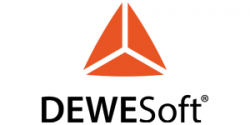 Martin Frolec
Martin FrolecManaging director
DEWESoft Deutschland GmbH
Germany
Compredict and Dewesoft join forces to provide OEMs and Tier 1 customers with a holistic approach from data acquisition to readily usable and robust virtual sensors. Using the experience and market-leading measurement hardware of Dewesoft for Compredict's virtual sensors software products enables high-quality data and insights and even entirely new features for the software-defined vehicles of the future. The collaboration ensures the right data is captured, fueling faster and smarter vehicle development, new SDV capabilities and predictive maintenance solutions for wear components, such as tire and brake wear. The presentation will highlight Compredict's new demo vehicle, including Dewesoft's participation.
What the audience will learn
- Which application areas for the virtual sensor portfolio exist
- Why high-quality data matters for virtual sensor applications
- What Compredict and Dewesoft can offer for the software-defined vehicle
- Practical examples of durability engineering benefits with virtual sensors
- How to experience virtual sensors in Compredict's new demo vehicle
Introducing an innovative technology to simplify invariant component characterization
 Ludo Gielen
Ludo GielenSenior director - innovation and incubation
Siemens Digital Industries Software
Belgium
Component characterization using invariant quantities such as blocked forces is a hot topic in the automotive industry. With physical prototypes becoming increasingly scarce, blocked forces allow test and CAE engineers to collaborate on component integration by predicting NVH performance in virtual assemblies at any stage of development. However, acquiring blocked forces has traditionally been reserved for highly skilled experts due to its complexity, despite the existence of relevant ISO standards (e.g. 20170). In this session, we will introduce an innovative technology that simplifies this complex task to enable wide-scale adoption of blocked forces methodology by any OEM or supplier.
What the audience will learn
- What are the bottlenecks in blocked forces characterization?
- How can these bottlenecks be eliminated?
- Which new use cases are enabled by this simplified workflow?
CARF, Catesby Aero Research Facility – vehicle aerodynamic test tunnel
 Dr Rob Lewis
Dr Rob LewisDirector
Catesby Tunnel
UK
Catesby Tunnel houses a 2.7km-long, purpose-built, straight-road test track allowing an extensive range of vehicle assessment studies to be carried out on full-scale vehicles. The tunnel is suitable for automotive and motorsport applications and capable of testing vehicle performance, vehicle aerodynamics (drag and downforce/lift), noise, soiling and cooling performance. One specific aerodynamic test Catesby Tunnel is perfectly set up to accommodate is coastdown. This session will present the latest test results in collaboration with Subaru Corporation in Japan.
What the audience will learn
- Latest aerodynamic test results in Catesby Tunnel
- Self-running vehicle aero test in early development stages
- Wheel force sensor on track test technology
- Autonomous development by using self-running scale model
- Importance of logic access free environment for electrification tech
Day 1: Tuesday, May 20
Hall 8 Tuesday, May 20, Hall 8 - afternoon session
Developing an integrated EV battery vibration test cell
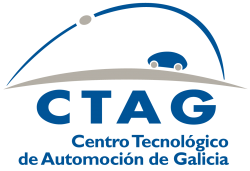 Carlos Rodríguez San Luis
Carlos Rodríguez San LuisHead of energy storage technologies and validation
CTAG
Spain
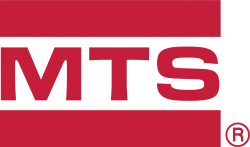 Stefan Pettersson
Stefan PetterssonSenior application engineer
MTS Systems
USA
Electric vehicle battery testing presents unique challenges to OEMs, suppliers and contract test labs as it requires the integration of separate systems to apply multi-axial vibration, cycle current, simulate environmental conditions and ensure the safety of test equipment and personnel. This presentation will explore a fully integrated EV battery vibration test cell developed by Centro Tecnológico de Automoción de Galicia (CTAG) to provide OEMs and Tier 1 suppliers with a turnkey 6DOF MAST solution for validating Li-ion battery packs. An application case will be presented detailing an actual test of an EV traction battery performed in the integrated test cell.
What the audience will learn
- Testing requirements for validating performance and durability of Li-ion batteries
- Necessary components of an integrated EV battery vibration test cell
- Approaches for ensuring safety of test equipment and lab personnel
- Advantages of using 6DOF MAST systems for EV battery testing
- Variety of ways 6DOF MAST systems can support EV development
Ensuring passenger safety in reclined seating: the role of THOR-AV-50M
 Paul Lemmen
Paul LemmenBusiness development manager
Humanetics
Netherlands
As autonomous vehicles (AVs) and innovative seating configurations become more common, traditional crash testing methods must evolve. The THOR-AV-50M is the industry’s first crash test dummy specifically designed to assess occupant safety in postures expected in AVs. This includes reclined seating, which is also a growing feature in luxury car interiors. Selected for a new reclined seating test protocol in China, THOR-AV-50M enables measurement of submarining risks, lumbar loads and seatbelt effectiveness in non-traditional postures. This presentation explores the development of THOR-AV-50M, its unique capabilities and its critical role in shaping the next generation of AV safety regulations and consumer protection.
What the audience will learn
- Why reclined seating poses new safety challenges
- What makes THOR-AV-50M different to THOR-50M
- How THOR-AV-50M enhances AV safety testing
Toolbox for embracing standards: the openDAQ approach
 Dušan Kalanj
Dušan KalanjProduct manager
openDAQ
Slovenia
openDAQ is an open-source SDK designed to streamline the integration of data acquisition hardware and software by embracing standards like ASAM CMP. Whether you're a DAQ device manufacturer, software provider, test engineer or system integrator, getting started is easier than you think. That said, the SDK is more than just a toolbox – it is a true DAQ kernel. Join our presentation to see how openDAQ simplifies standard adoption, enhances interoperability and empowers you to build robust measurement solutions with ease.
What the audience will learn
- openDAQ in a nutshell
- Who we are, our vision, our goals
- openDAQ from different angles: hardware integration, software, test engineering
- Short-term, mid-term and long-term plans
- Building a community
AI-enabled end-of-line testing based on vibro- and psychoacoustic analyses
 Dr Lasse Halve
Dr Lasse HalveProject engineer
Head Acoustics
Germany
Apart from functional and electric tests, testing for vibroacoustic tolerances is becoming increasingly common and sought after. Many OEMs demand adherence to vibroacoustic specifications in quality control from their suppliers. Furthermore, vibroacoustic measurements can be used very effectively to monitor production quality in a wide field of products. In this talk, we present a case study combining psychoacoustic pre-processing with high-performance AI models for real-time end-of-line quality control. All steps, including data acquisition, data preparation and training of the AI algorithms, are integrated within an easy-to-use suite of tools, significantly reducing the engineering effort required.
What the audience will learn
- Why is vibroacoustic quality control critical?
- Application of vibroacoustics in end-of-line testing
- Combination of psychoacoustics and AI algorithms
A2RL: how to effectively handle the autonomous race-car development process
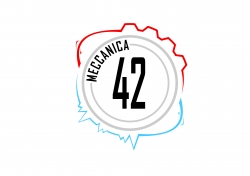 Dr Claudio Annicchiarico
Dr Claudio AnnicchiaricoCEO
Meccanica 42
Italy
This project is about enabling autonomous drive for race cars in competitive scenarios, delivering the highest performance levels while ensuring safe and reliable execution of autonomous tasks. Hardware and software architectures were designed and validated using real-time test rigs to meet performance and safety standards. The adopted HIL testing environment allowed safe validation of the drive-by-wire systems, considering intended functionalities, failure modes and misuse scenarios; moreover, it allowed verification of the reliability of the integration with the teams-specific algorithms, maintaining top-tier functional safety levels. Launched in 2024, the A2RL competition is now a platform for innovating AD across industries beyond motorsport.
What the audience will learn
- HIL
- Drive-by-wire
- Autonomous drive
- Motorsport
- Functional safety
Day 1: Tuesday, May 20
Hall 10 Tuesday, May 20, Hall 10 - morning session
Optimizing energy efficiency: power testing for EVs and solar systems
 Elmar Neumann
Elmar NeumannGeneral manager
LXinstruments, Itech Partner
Germany
Itech will showcase advanced power testing solutions at Automotive Testing Expo, focusing on electric vehicles (EVs) and photovoltaic (PV) systems. Our solutions ensure precise, reliable and scalable power testing, enabling the optimal performance of EVs and PV applications. With a strong emphasis on efficiency and accuracy, Itech’s power testing technology plays a crucial role in enhancing the development, validation and performance assessment of these cutting-edge technologies in the automotive and renewable energy industries.
Benefits of integrating ISO 26262, ISO 21434 and ISO 8800
 Robert Rocamora Graell
Robert Rocamora GraellFunctional safety director
Dekra
Spain
In the automotive sector, functional safety compliance has been carried out by performing classical standalone ISO 26262 assessments. When the cybersecurity standard for road vehicles – ISO 21434 – was released, this field was also covered by standalone assessments. The same thing is happening today with the recent release of ISO 8800 related to artificial intelligence for automotive. Why aren't there combined assessments of these three fields instead of standalone ones? Which benefits might we get from this joint approach? The new digital trust era has arrived, and innovative approaches should be used.
What the audience will learn
- Automotive electronics assessments and certification
- Linkage points between automotive FuSa-CySe-AI
- Safety and secure compliance in automotive electronics
Beyond measurement technology: precise solutions for testing electric vehicles
 Christian Walther
Christian WaltherKey account manager
imc Test & Measurement
Germany
As the automotive industry accelerates toward electrification, precision measurement in the electric vehicle (EV) powertrain has become more critical. Join us for a presentation that delves deeply into the realm of EV powertrain measurements, providing insights and solutions that are essential for test and measurement engineers in the automotive industry. We will explore the unique challenges posed by the electrification of the powertrain and how cutting-edge measurement technology is rising to meet these challenges. Our comprehensive agenda covers a wide range of topics, ensuring you gain valuable knowledge and actionable solutions.
What the audience will learn
- Safe measurement in e-mobility applications
- Efficiency e-drive drivetrain/e-axles test benches
- Wireless mechanical power measurements on shafts – test bench and road
- Wheel forces on electric vehicles, rotor position sensor test benches
- Temperature measurements in rotors of electric motors
Productizing: from idea to reproducible test system
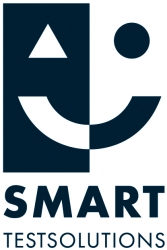 Stefan Fuchs
Stefan FuchsBusiness development manager - test systems and applications
Smart Test Solutions
Germany
Designing a test system without losing sight of the application and the user requires a great deal of experience and background knowledge. Smart productizing describes the path from the initial idea to industrialization and distribution for the worldwide sale of test systems. Using the example of a Bosch Super HIL system, all relevant steps and challenges from concept to industrialization for a reproducible system are presented. Understanding customer requirements, consulting, the design concept, the selection of components and the right price/performance ratio for the task are key factors for success.
What the audience will learn
- Industrialisation of test systems
- Criteria for component selection
- Differences in the areas of test systems applications
- Pitfalls in system design
- Wishes versus feasibility
Unlocking accurate in-cabin acoustic measurements
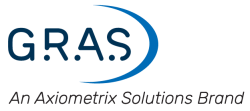 Santiago Rayes
Santiago RayesProduct manager
Gras Sound & Vibration
Denmark
Measurement microphones, despite their precision, inherently alter the sound field due to reflections and diffractions caused by their size and shape. This challenge becomes critical in car cabins, where non-ideal acoustic environments – defined by complex materials and confined spaces – compromise test reliability. Smaller microphones, optimized for such environments, offer solutions but also introduce new hurdles. Additionally, the growing use of microphone arrays to characterize automotive audio systems presents unique challenges. Join us as we delve into the intricacies of in-cabin acoustic measurements, explore cutting-edge solutions and address the evolving demands of automotive audio testing.
What the audience will learn
- Measurement microphone effects on sound fields explained
- Benefits of smaller microphones in minimizing sound field interference
- Limitations of microphones designed for ideal acoustic environments
- Choosing microphones for non-ideal conditions like car cabin tests
- Challenges of microphone arrays in automotive audio characterization
Efficient ECU testing: SIL to HIL with minimal effort
 Eva Appel
Eva AppelSenior business development manager
Vector Informatik
Germany
The presentation introduces a structured approach to efficiently test ECUs from a software-in-the-loop (SIL) environment to real hardware. Initially, before the base software is fully developed, the ECU operates in a virtualized environment with generated base software. Later on, the ECU integrates the productive base software, still running in a virtual environment with a simulated vehicle bus. In the final stage, it connects to a physical vehicle bus for hardware-in-the-loop (HIL) testing. The talk covers key software capabilities that enable a smooth transition from SIL to HIL, ensuring efficient testing and improved software quality.
What the audience will learn
- Different levels of ECU virtualization and their role in testing
- Test cases reusable across virtualization stages, including real hardware
- Early testing quickly identifies and localizes issues
- Tool requirements for virtualization and testing from SIL to HIL
Pioneering innovation in electric vehicle thermomanagement with advanced testing solutions
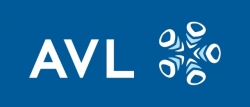 Dr Peter Priesching
Dr Peter PrieschingGlobal product manager
AVL List
Austria
In the fast-evolving field of e-mobility, advanced thermal management plays a crucial role in the success of electric vehicles. Leading the charge in this innovation, AVL offers intelligent testing solutions that are driving the development of highly optimized vehicle thermal management systems, tailored to the specific needs of electrified powertrains. Through the versatile ThermalLab modular test system, a wide array of test configurations can be implemented. In this presentation, we will showcase the applications that have already been deployed, and explore the use cases that support you throughout the development process, ensuring maximum efficiency from a complex thermal management system.
What the audience will learn
- Discover how to enhance thermal management control functions with hardware in the loop
- Explore the key testbed components for effective thermal management testing
- Gain insight into potential cost and time savings
ADwin real-time systems and Python user interfaces for lab and test stand automation, end-of-line testing, hardware-in-the-loop
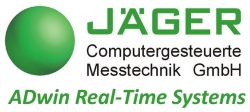 Heinz Beimert
Heinz BeimertSales manager
Jaeger Computergesteuerte Messtechnik
Germany
The ADwin product family provides real-time solutions for applications ranging from kHz to MHz with ns-timing precision. Applications are end-of-line testing, hardware-in-the-loop, test bench automation, data acquisition, signal analysis and special machine automation. ADwin devices are available as standard or customized OEM systems, offering a variety of analog and digital signal types, and interfaces such as CAN, SENT, LIN, SPI and RT-ethernet. The ADwin system integration and project team builds custom solutions, using tools such as ADbasic/ADwin-C or Simulink. Academic and laboratory users take advantage of the new Python software suite, with user interfaces, analysis, databases, plotting, protocols and data management.
What the audience will learn
- Python as graphical user interface for ADwin real-time systems
- Visualization, plotting, protocols, databases and data management
- Hardware-in-the-loop application examples with ADwin and Simulink
- CAN, SENT, LIN, SPI and RT-ethernet interfaces in the application
- End-of-line tests in production for sensor, actuator and interior devices
Day 1: Tuesday, May 20
Hall 10 Tuesday, May 20, Hall 10 - afternoon session
An approach to develop a flash bootloader with zero codes
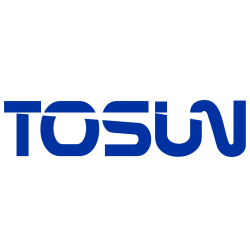 Dr Yueyin Xie
Dr Yueyin XieCTO
Shanghai Tosun Technology
China
This speech provides an approach to develop the flow of flash bootloader through a graphical interface, which solves the traditional development method based on code development. This method is suitable for the current mainstream vehicle bus interfaces, such as CAN, CAN FD, LIN and DoIP. With the functions of encryption and application release of TSMaster software, the FBL configuration can be published to production lines or after-sales scenes like ordinary applications.
What the audience will learn
- How to realize a single diagnosis service
- How to configure the diagnostic service flow with graphic user interface
- Service process abstract architecture, applicable to all bus types
- Important configuration items common in the process of developing FBL
- Publish the configuration of FBL as an independent application file
Automotive Ethernet – how 10BASE-T1S is replacing legacy bus topologies
 Felix Ottofuelling
Felix OttofuellingBusiness development manager EU
Intrepid Control Systems
Germany
Automotive Ethernet is the enabler for zonal networks. However, the high gigabit bandwidth between HPC and zonal controls is not required in all areas; in particular, the zones with the peripheral components for actuators, sensors, etc. require much less bandwidth. For this application, a new physical layer 10BASE-T1S is applied. Learn how the 10BASE-T1S network is different from automotive Ethernet, and how this network can support bus-type architectures very similar to CAN with the benefits of all automotive Ethernet protocols. The presentation will explain how 10BASE-T1S technology can replace CAN FD networks and foster an all-ethernet architecture.
What the audience will learn
- Why Automotive Ethernet in Zonal Architectures
- How the SDV is built on a Zonal Network
- How the Network Topologies is changing for Zonal Controllers
- How the 10 BASE-T1S network is working
- What are the befits of replacing legacy network by Ethernet
Presenting ETAS's next-gen hardware devices to meet the demands of the future
 Mukunda Gopal
Mukunda GopalProduct manager
ETAS
Germany
 Mirko Haupt
Mirko HauptProduct manager
ETAS
Germany
Automotive electrical and electronic (E/E) architectures are increasingly transitioning from traditional bus topologies to ethernet-based communication. Our product managers will highlight the reasons why ETAS measurement and calibration devices are the preferred choice for engineers globally in in-vehicle applications. Whether it's tapping into a modern gigabit ethernet bus connecting two high-performance ECUs or measuring the transmitted actuator data via 10Base-T1S, ETAS devices are designed to meet and exceed customer needs.
What the audience will learn
- ETAS launches new ethernet HW devices for measurement and calibration
- Devices capable of 1Gbps and 10Mbps ethernet speeds
- What the key features of the devices are
- How these devices can help development engineers
- Why ETAS devices are preferred for in-vehicle development use cases
Masterclass: onboard and dynamometer measurements of brake and tire particle emissions
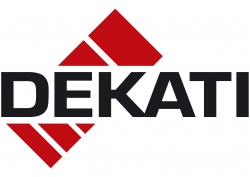 Oskari Vainio
Oskari VainioVice sales director
Dekati
Finland
In recent years, the focus of vehicle emission reduction has been shifting from exhaust to non-exhaust emissions. Brake wear emissions are currently being regulated, and obviously the next priority will be tire wear emission reduction. Brake and tire wear emission measurements present various challenges in terms of test methods. Dekati has been at the forefront of brake and tire wear particle emission measurements, both in dyno and on-road testing. In our presentation, we will look at actual test setups and measurement results carried out with the advanced Dekati HR-ELPI+ system, which is widely used for R&D and regulatory testing.
What the audience will learn
- Brake wear emission testing methods
- Tyre wear emission testing methods
- EURO 7 Non-exhaust particle emission regulation
- On-board vehicle brake wear setups
- On-board vehicle tyre wear setups
Day 2: Wednesday, May 21
Hall 8 Wednesday, May 21, Hall 8 - Automotive Testing Technology International (ATTI) Forum 2025
Day 2: Wednesday, May 21
Hall 10 Wednesday, May 21, Hall 10 - morning session
EDAG EDlight – AI-based testing of light functions
 Julian Metzger
Julian MetzgerProject manager
EDAG Engineering
Germany
Manual end-to-end testing of light functions in HIL systems or vehicles is a time-consuming task. The increasing complexity of light functions, such as adaptive driving beams, escalates testing efforts and the number of test cases. To address this challenge, Edag developed an innovative tool called EDlight. The core feature of EDlight is an AI-based image detection and classification system that enables fully automated testing of light functions. The test automation controls the lights, while a video camera captures the frames as input for the AI. After detecting the current state and ground truth, an automated report is generated.
What the audience will learn
- Automated testing of light functions
- Application of AI to check visual test results
- Applying transfer learning to image analysis tasks
- Advantages of AI in testing
- Insight into EDlight workflow
Modernizing control software testing of electric powertrain components
 Milutin Mitrovic
Milutin MitrovicAccount development lead
Typhoon HIL
Serbia
This presentation will talk about the change in testing requirements that transportation electrification brings with it. The transition from a hardware-defined vehicle to a software-defined one is taking place. Instead of internal combustion engines, which lose performance over time, the modern electric vehicle is based on agile development and continues to improve performance and functionality during the operational product maintenance. Increased and improved HIL testing of these components spans beyond the safety-criticality standards and drives opportunity to streamline improvements and enable a safe and ever-improving over-the-air update-based vehicle.
What the audience will learn
- Standardizing the tools for all powertrain component control software
- Improving efficiency of software teams by increasing collaboration
- Ease of use with a HIL platform
Enhancing test bench efficiency with real-time connection and self-learning AI
 Thorsten Huber
Thorsten HuberProduct manager
ETAS
Germany
This talk showcases the benefits of combining fast ECU access with self-learning AI methods. Automated self-learning of meaningful ranges for parameter variations helps improve the efficiency of test runs, while fast variation of parameters and instant reaction to limit violations improves stability and security at the benches. Combining both methods by flexible automation increases the benefits even more.
What the audience will learn
- Enhance test bench efficiency with self-learning AI methods
- New technology for fast real-time ECU access
- Efficient automation methods for measurement of modern powertrains
Next-level simulation artifact management – a centralized, tool-agnostic, one-stop shop
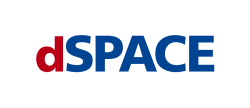 Jannik Pflanzl
Jannik PflanzlProduct manager testing and data management
dSPACE
Germany
Transparency, collaboration and traceability are gaining more importance in development and deployment of simulation artifacts (e.g. models) due to the increasing global distribution of development tasks and the necessity of credible processes. With Artexa, the new dSPACE solution for web-based simulation artifact management, customers can now enrich the artifacts of various tools semi-automatically with metadata, upload them into the cloud back end and make them accessible to the whole organization via an intuitive web portal. This directly results in several advantages: increased efficiency of allocated resources, improved quality and credibility of simulation results and better collaboration and transparency.
What the audience will learn
- Benefits of web-based simulation artifact management
- Ease of worldwide collaboration based on cloud technology
- Introduction to Artexa as simulation artifact management software
High-precision vehicle dynamics measurements at Mercedes-Benz
 Kai Gilbert
Kai GilbertCEO
Sensoric Solutions Optic in Motion
Germany
Mercedes-Benz analyzes the smallest vehicle movements in order to perfect the driving characteristics typical of the brand. Hear how the slip angle helps with this and which sensors are used. One critical parameter in vehicle tuning is the vehicle's slip angle. This angle represents the difference between the vehicle's longitudinal axis and the velocity vector at a defined point of measurement. It provides valuable insights into tire and axle characteristics and general stability criteria. With advanced chassis systems such as rear-wheel steering, the measured slip angles can become very small. High resolution and accuracy are essential.
What the audience will learn
- Vehicle dynamics measurements at Mercedes-Benz
- Slip angle - how to measure
- What accuracies are possible
- Which technology is best suited for measuring the slip angle
- User-friendly operation and integration into existing systems
Test strategies for future battery systems
 Catharina von Appen
Catharina von AppenTechnical sales manager - Battery Test Center
DEKRA Automobil
Germany
The presentation will focus on the changes in batteries in terms of weight and size and the resulting requirements for cells, overall systems and their effects on battery tests. Topics addressed: batteries are getting bigger and bigger; cell to pack versus cell to chassis; shaker requirements for these new problems; requirements for battery systems are becoming ever stricter; implementation of the test using component bumpers within Dekra Crash Test Center; energy optimization on the test benches: the energy content is becoming larger and larger; development cycles in Europe.
What the audience will learn
- Changes in batteries and the resulting requirements
- Rapid development of battery systems and the resulting customized tests
- Stricter requirements demand innovative test methods (Dekra Battery Test Center)
Analyzing complex vehicle electrical systems
 Timo Eich
Timo EichBusiness development manager
CSM
Germany
In the future, the high-voltage electrical systems of EVs will be complemented by dual 12V/48V electrical systems. These significantly increase vehicle complexity and are a source of faults in the vehicle's power supply. Comprehensive diagnosis is therefore essential for the safe operation of electric vehicles. This requires analyses of voltages and currents in the low-voltage vehicle electrical system, including the consumers and voltage converters. In this keynote speech, CSM will show how the Vector CSM E-Mobility Measurement System can be used to solve these measurement tasks quickly, safely and precisely.
What the audience will learn
- Why multivoltage electrical systems add complexity to an EV
- An investigation of which values and phenomena are mandatory
- Which measurement tools allow extensive, multichannel tests in confined spaces
- How comprehensive bus and ECU data acquisition complements analog signals
- How to merge and synchronize measurement data from different sources
Wi-fi telemetry – game-changing revolutionary simplicity and maximum flexibility
 Dr Julia Manner
Dr Julia MannerDirector
Manner Sensortelemetrie
Germany
As a leading provider of inductive telemetry solutions, Manner has now overcome the challenges of battery-powered radio telemetry. Our latest wi-fi telemetry technology enables extended measurement periods without frequent recharging, thanks to an on-demand wake-up function. Designed for ultimate efficiency, it features energy-saving circuits and intuitive usability. Combined with a modular concept for flexible channel configurations, this innovation meets diverse user needs, delivering unmatched performance with Manner’s signature quality and accuracy.
What the audience will learn
- Manner overcomes battery-powered telemetry challenges with innovative wi-fi technology
- On-demand wake-up function enables extended measurement periods without frequent recharging
- Energy-saving circuits optimize efficiency and ensure reliable measurements anytime
- Modular concept allows flexible channel configurations for diverse applications
- Manner’s wi-fi telemetry combines highest precision with maximum user friendliness and flexibility
Day 2: Wednesday, May 21
Hall 10 Wednesday, May 21, Hall 10 - afternoon session
IAV's way from testing facility to test bench provider
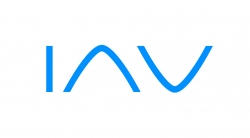 Enrico Neumann
Enrico NeumannProduct manager
IAV
Germany
This presentation outlines IAV's successful transformation of test facilities from conventional to electric drives. IAV has converted combustion engine test benches into those for high-voltage (HV) drives and components. These facilities test all HV components, from onboard chargers to batteries, covering the full spectrum. IAV supports not only test execution but also the design and construction of test centers for clients. Initial projects with renowned OEMs and suppliers have been realized. With expertise in test technology and a deep understanding of devices under test (DUT), IAV aids clients in optimizing their test benches.
What the audience will learn
- Transforming a complete test facility for new era of mobility
- Lessons learned on the way to transformation
- Tackling regulatory and technical hurdles
- Way to adopt its business model to industry needs
Challenges and solutions in battery validation for electric and hybrid vehicles
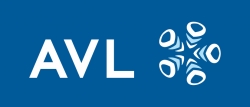 Dr Christian Miesner
Dr Christian MiesnerVice president, battery and cell testing
AVL
Germany
In the rapidly evolving hybrid and electric vehicle (HEV) market, battery technology stands at the forefront of innovation, driving the push for enhanced performance, safety and efficiency. As manufacturers race to develop superior battery solutions within increasingly compressed timelines, robust validation methodologies and adaptable testing tools become essential to ensure reliability and compliance across diverse global markets. This presentation will provide an overview of key regulatory frameworks and emerging technological trends in EV battery development. It will highlight the critical challenges faced by the automotive industry in battery validation and explore how a comprehensive toolchain approach can support engineers.
What the audience will learn
- Overview of key regulatory frameworks, emerging tech trends
- Toolchain approach to meet stringent performance and safety requirements
- Leveraging validation solutions to accelerate innovation
A fourth-generation diagnostic system
 Thomas Qiu
Thomas QiuManaging director
Windhill Technologies
Singapore
With the concept of new EEA and SDV, there are new requirements related to diagnostic systems, for example unified diagnostic data center, fast delivery time, flexible diagnostic architecture. Windhill provides full lifecycle solutions including diagnostic requirements management, data management, guided diagnostics, information management, release management, production EOL and after-sales tester, onboard tester and cloud tester. These solutions have already been used by some top Chinese OEMs.
What the audience will learn
- How to use AR/AI technologies in diagnostic systems
- How to apply ODX/OTX/XML for a diagnostic system's dynamic content
- Develop once and run everywhere including vehicle, cloud and tester
- Full lifecycle solution from requirements to tester
Masterclass: AI-driven test automation – the end of manual test case creation
 Patrick Stiller
Patrick StillerProduct owner AI assistant
Tracetronic
Germany
Automotive software testing is undergoing a major transformation. While test automation has become standard, creating test cases still requires significant manual effort. At Tracetronic, we leverage AI-driven test automation to change this fundamentally. With an AI-powered assistant, we are already generating test cases automatically and integrating them into existing test workflows. However, this journey comes with challenges: what technical hurdles did we overcome? Where are the current limitations – and what is still possible? In this session, we will showcase how AI-driven test case generation works in practice and provide insights into the future potential of AI in software testing.
What the audience will learn
- How to use an AI assistant to create test cases
- Technical and organizational hurdles in integrating AI into test automation
- Why AI not only improves efficiency but also enhances quality
- A glimpse of what is possible in the near future
Day 3: Thursday, May 22
Hall 8 Thursday, May 22, Hall 8 - morning session
Novel approach to filtering isolation resistance values in EVs
 Alexandru Cojocariu
Alexandru CojocariuHV engineer
Iveco Group
Germany
As electric vehicles become increasingly common, the need to ensure their safety and reliability is more important than ever. The most serious electrical issue during the EV life is the loss of isolation between HV bus and the chassis of the vehicle. For this reason, the isolation value must be checked at all times. Such a check is performed by the so-called IMD (isolation monitoring device). On trucks, due to the large number of components, these values are not always stable and coherent. Therefore, a novel filtering algorithm is proposed.
What the audience will learn
- Current state of IMD technology
- Particular IMD challenges
- A new approach to reduce process IMD signals
Advanced analysis of electric drivetrains in real time
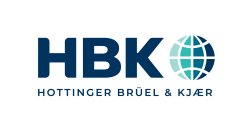 Klaus Lang
Klaus LangBusiness development manager
HBK
Germany
The presentation focuses on advanced analysis of electric drivetrains beyond pure performance and efficiency measurement. It explains a few example analysis methods that can be applied in real time to get a better understanding of the drivetrain and to get a handle on starting to improve it. The example analysis will explain real-time torque ripple measurement; real-time DQ current transformation; real-time efficiency map creation and differential map analysis.
What the audience will learn
- What real-time analysis of electric drivetrains is possible
- How to do real-time DQ transformation including offset
- How to do differential efficiency maps
- How to automatically measure torque ripple
New solutions for future mobility emission requirements
 Dr Simone Eichmann
Dr Simone EichmannEuropean product manager - emission monitoring
Horiba Europe
Germany
Due to current and upcoming legislation, the requirements for emissions measurement have changed vastly. New components such as N2O and NMOG are to be included. Additionally, alternative fuels are gaining more importance in the transition to carbon neutrality in the mobility sector. Therefore, emission monitoring test cells need to be adapted to those requirements. This session will give an overview of how to meet these challenges and how they affect current test equipment for various types of mobility, including light- and heavy-duty vehicles.
What the audience will learn
- Current and upcoming legislations information
- Requirements for emissions measurement
- Info on new components such as N2O and NMOG
New-generation KT camera from Vision Research for automotive testing
 Dr Thomas Weber
Dr Thomas WeberSales manager DACH
AMETEK
Germany
We present a new platform for high-speed cameras and explain the advantages for tests in the automotive environment. The technical features are discussed, and then we present our overall system for tests in vehicle safety.
What the audience will learn
- New high-speed camera platform
- Vehicle safety
- Overall system architecture
Day 3: Thursday, May 22
Hall 10 Thursday, May 22, Hall 10 - morning session
Challenges and solutions in cooling power supplies for testing
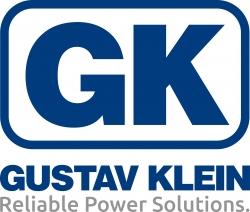 Michael Reith
Michael ReithSales director
Gustav Klein
Germany
Due to the environmental and installation conditions of power supplies for testing, there are different requirements for the protection classes of the cabinets. This requires different types of cooling. The presentation will introduce different variants of cooling, with the challenges and solutions when using them.
What the audience will learn
- Ambient conditions and required IP classes
- Different types of cooling depending on IP classes
- Advantages and disadvantages of air cooling
- Advantages and disadvantages of water cooling
NG eCall, 5G NTN and C-V2X test challenges in vehicles
 Matyas Suveg
Matyas SuvegR&D manager
Noffz Technologies
Germany
Every new vehicle is connected now. From passenger cars and self-driving buses in smart cities, high-speed trains, long-haul trucks and transatlantic cargo ships to automated tractors operated far from any infrastructure, vehicles are always online, always reachable. 5G offers dozens of bands and endless configurations and operation modes to support the transportation industry with new technologies like NG eCall, 5G NTN and C-V2X. Combined with the strict automotive quality requirements and dual SIM operation, this results in a multitude of test challenges to be tackled in EMC, validation and production testing.
What the audience will learn
- NG eCall operation and application
- Benefits of 5G NTN in transportation
- Insights into how C-V2X works
- Test solutions for 5G-based connectivity devices
- The importance of 5G connectivity in autonomous driving
Ultimate precision – Manner torquemeters for test benches
 Stephanie Manner
Stephanie MannerDirector
Manner Sensortelemetrie
Germany
As a leading provider of telemetry solutions, Manner is also renowned for its high-precision torquemeters. Its torquemeters are the only ones on the market that compensate for temperature gradients and centrifugal-force-induced measurement errors in real time – eliminating the need for post-processing. This ensures unparalleled accuracy, making the company's latest XtreMA Ultimate Precision (XtreMA UP) series the benchmark for precision in torque measurement.
What the audience will learn
- Manner leads telemetry, renowned for precision torquemeters with real-time compensation
- Unique torquemeters counter temperature gradients and centrifugal forces without delay
- Real-time error compensation eliminates post-processing, delivering consistently precise torque measurements
- XtreMA UP series sets benchmark for unmatched torque measurement precision
- High engineering expertise revolutionizes telemetry, ensuring uncompromising accuracy every time
Ten things unknown about your car's safety equipment
 Klaas Ebel
Klaas EbelBusiness development manager - vehicle safety
measX
Germany
Lack of experts and loss of know-how and experienced engineers are becoming an increasing driver for automation and the use of AI-based technologies in the R&D process. Klaas, as a veteran in the industry, shares some of his insights and points out the importance of having human beings in the loop. He will provide a brief insight into regulatory work and measX's work to support this with software tools, as well as a glimpse into upcoming challenges.
What the audience will learn
- Is safety a unique selling point – the safety belt
- The heavier, the safer – weight counts heavy
- Does design matter?
- My car makes educated decisions – frightening?
- We are all pedestrians at some point – really
Mastering communciation challenges in battery and EV component EOL tests
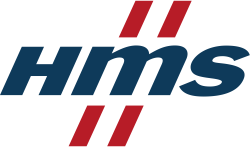 Markus Demaria
Markus DemariaProduct manager
HMS Technology Center
Germany
The 'intelligence' of the batteries and e-drive is located in an ECU. Due to the manufacturing robustness of EV components, batteries and drives are tested at the EOL. For this, the ECU must be connected to the automation system so that measurement and calibration data can be exchanged. Join us to find out how one of the market leaders in industrial communication technology solves critical communication problems in EV EOL testing.
What the audience will learn
- Efficient communication solutions for EV components in EOL test systems
- Connecting your test environment to your automation system
- Simulating signals of ECUs not present at test time
Leveraging hybrid 3DGS and graphics simulation for end-to-end testing
 Shiqiang Bao
Shiqiang BaoCEO
51Sim (Beijing 51Sim Technology
China
This presentation will highlight how 51Sim uses cutting-edge 3D Gaussian splatting (3DGS) in combination with advanced graphics simulation technologies to drive innovation in high-level intelligent driving testing, with a particular focus on the emerging trend of end-to-end intelligent driving systems. We will explore best practices in integrating 3DGS technologies for enhancing testing efficiency and simulation confidence. By bridging the gap between virtual testing and real-world application, this approach aims to ensure more accurate, reliable and scalable results in software-in-the-loop (SIL) and hardware-in-the-loop (HIL) testing.
What the audience will learn
- Integrating 3DGS technology with traditional simulation engines
- Approaches for end-to-end autonomous driving system testing
- Benchmarking and improving simulation confidence levels
- Trends in bridging the gap between simulation and reality